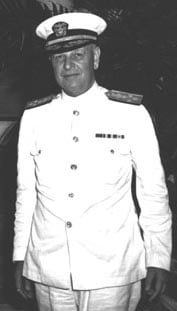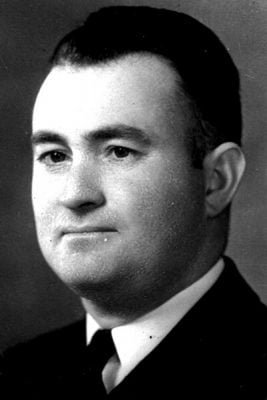Explore Pearl Harbor and know more about what actually happened on December 7, 1941. Book your Pearl Harbor tours now!
The day after Pearl Harbor was attacked by Japanese, Franklin D. Roosevelt, the then United States President called December 7, 1941, in his speech as “a date which will live in infamy.” He asked Congress to declare war on Japan, emphasizing on the fact that the peace was being maintained by the United States with Japan but it would no longer be so. Soon after it, the United States entered World War II and the rest is history. The U.S. leaders who commanded the fleet at the Pearl Harbor during WWII include:
 Bennion, Mervyn Sharp
Bennion, Mervyn Sharp
Captain of USS West Virginia Mervyn S. Bennion
Medal of Honor Winner
Captain Bennion was gravely wounded in an explosion on USS Tennessee where a large piece of metal had struck his abdomen. He was in excruciating pain while staying under the conning tower in a cot but that did not stop him from constantly enquiring about his men and the ship. He ordered the men to leave him and go below. Notwithstanding his order, Lieutenant Commander Harper, Doris Miller and other men present on the deck moved him. Captain Bennion was awarded the Medal of Honor for his remarkable service on USS West Virginia.
Admiral Husband E. Kimmel
Admiral Husband E. Kimmel became the commander-in-chief of the US Pacific Fleet in February of 1941 soon after which he talked about his concern of a surprise attack. He did not, however, make any apparent changes to prepare for such an attack.
 Admiral Kimmel and his army counterpart General Short were supplied various warnings about a possible attack. After this, a number of warnings were given out but no action took place. Later, Kimmel was asked the reason behind not paying attention to the warnings. He stated that the War and Navy Departments had authorized to send 50 percent of Hawaii’s P-40s to Wake and Midway which made him think that authorities in Washington “did not consider hostile action on Pearl Harbor imminent or probable.”
Admiral Kimmel and his army counterpart General Short were supplied various warnings about a possible attack. After this, a number of warnings were given out but no action took place. Later, Kimmel was asked the reason behind not paying attention to the warnings. He stated that the War and Navy Departments had authorized to send 50 percent of Hawaii’s P-40s to Wake and Midway which made him think that authorities in Washington “did not consider hostile action on Pearl Harbor imminent or probable.”
“AIR RAID PEARL HARBOR. THIS IS NO DRILL” was the first message he sent from his office right after the air attack had started. He was still in his office at 8:05 when a stray bullet crashed through the window and hit Kimmel in the chest. “It would have been more merciful had it killed me.” He said to the officer next to him.
On December 17th, Kimmel and Short were relieved of Duty. After going through various investigations and enquiries on the “naval debacle”, the Senate exonerated both General Short and Admiral Kimmel in 1999.
After Kimmel, it was Admiral Chester W. Nimitz who handled the command of the US Pacific Fleet. He believed it was better that Kimmel hadn’t prepared for the attack, for had they prepared, the fleet of ships would have gone out to sea, leaving Pearl Harbor. The consequences would have been much more devastating and more than five times as many American sailors would have been lost.

 Bennion, Mervyn Sharp
Bennion, Mervyn Sharp